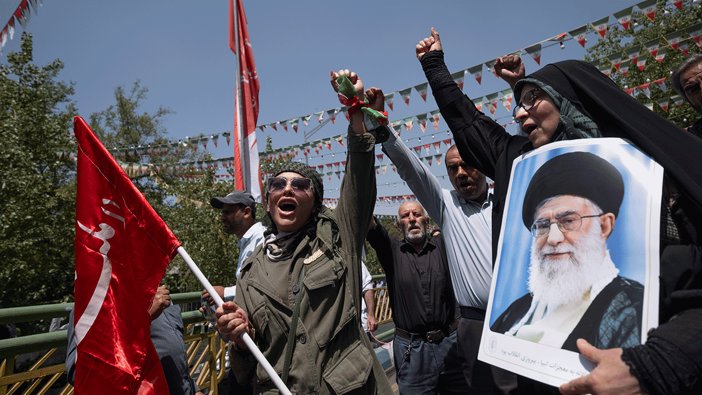
US Officials Warn of Sleeper Cell Threat After Iran Strikes
US officials warn of sleeper cell threats as hundreds of Iranians released into the US amid heightened retaliation fears.
Security Alert Issued After Iran Strikes
United States security officials are raising urgent alarms over the risk of terror-backed sleeper cells operating within the country following President Donald Trump’s decisive military strikes against Iran’s key nuclear facilities. The Department of Homeland Security (DHS) released a new National Terrorism Advisory System bulletin just hours after the strikes, warning of a “heightened threat environment in the United States.”
While the bulletin did not specify immediate threats, it follows direct warnings from Iranian officials about possible retaliation against the United States. The advisory notes that violent extremists, inspired or directed by Iran or its proxies, could mobilize to conduct attacks if the regime calls for retribution. DHS emphasized, “The likelihood of violent extremists in the Homeland independently mobilizing to violence in response to the conflict would likely increase if the Iranian leadership issued a religious ruling calling for retaliatory violence against targets in the Homeland.”
Border Security Concerns and Released Nationals
Security concerns are amplified by the revelation that over 1,500 Iranian nationals were apprehended at the southern border during the Biden administration, with nearly half—729 individuals—released into the US. Yearly data show a significant increase, with 48 Iranians arrested in fiscal year 2021 and 797 by 2024. Of those, the number released also grew sharply each year, sparking fears among law enforcement and security experts that undetected threats may remain within US borders.
All Iranians entering illegally are classified as “special interest aliens” due to national security risks, warranting enhanced vetting. However, critics, including former FBI officials, argue that insufficient screening and “catch and release” policies have left the US vulnerable. Former FBI assistant director Chris Swecker warned, “We don’t know where those thousand Iranians are and who knows how many others got across the border. We missed the opportunity to gather intel by interviewing them and thoroughly vetting them. We just simply let them go, which is gross negligence.”
The Biden administration has declined to release details on how many of the released individuals were on terrorism watchlists, citing privacy concerns. With more than two million “gotaways” at the border during this period, the actual scope of the risk is unknown.
Threats of Retaliation and Domestic Plots
The DHS bulletin states that law enforcement has disrupted “multiple potentially lethal Iranian-backed plots” within the US since 2020. In a notable case last year, federal prosecutors announced arrests tied to a plot by a member of Iran’s Islamic Revolutionary Guard Corps to assassinate then-President-elect Trump and a US citizen critical of Tehran. National security experts caution that Iranian intelligence operatives and proxy groups are capable and determined to target critical infrastructure, including electrical grids, medical facilities, and transportation hubs.
Michael Balboni, former Homeland Security advisor for New York, stressed the difficulty of tracking potential operatives: “Tens of millions of people came across and we don’t know who they are, where they came from, what their capabilities are or their intentions.” The ability of adversaries to conduct pre-operational surveillance, aided by online satellite mapping, increases the threat level. The FBI has faced criticism for prioritizing domestic threats while international risks escalated.
Officials urge calm, heightened vigilance, and robust information sharing across agencies. “This is a time for calm, professionalism, information sharing and heightened awareness,” Balboni stated. The current environment, driven by escalating Middle East tensions, makes the risk of retaliatory attacks on US soil a critical national security concern. As law enforcement remains on high alert, the path forward depends on both vigilance at home and developments abroad.






